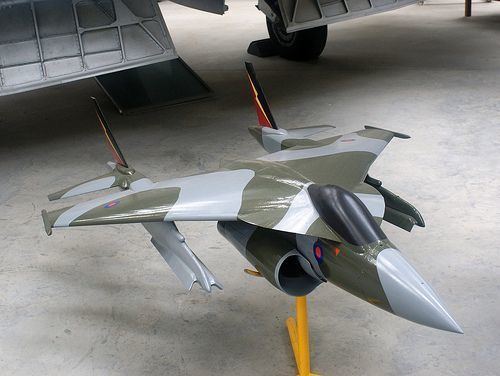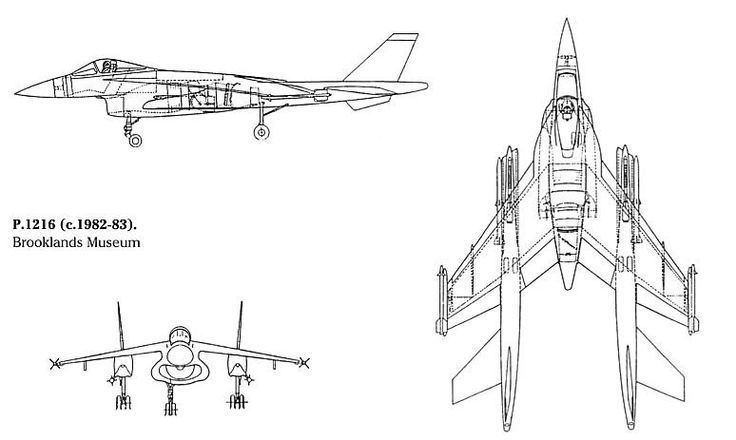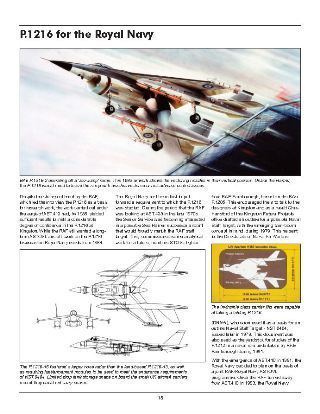Manufacturer British Aerospace | ||
The British Aerospace (BAe) P.1216 was a planned supersonic Advanced Short Take Off/Vertical Landing (ASTOVL) aircraft from the 1980s. It was designed by the former Hawker design team at Kingston upon Thames, Surrey, England that created the Harrier Jump Jet family of aircraft.

The P.1216 was planned to be powered by a plenum chamber burning equipped vectored thrust engine. This used three swivelling engine nozzles rather than the four used in the Harrier. The project was most notable for its use of a twin boom layout in place of a single rear fuselage.

This was intended to eliminate many of the problems caused by exhaust gases from the engine causing vibration in the rear fuselage and tail of the aircraft. (A similar solution to the three-nozzle problem was adopted in the later YAK-141 prototype supersonic VTOL interceptor)

The BAe P.1216 was extensively tested in model form during the 1980s, and a full-scale mock-up was viewed by British Prime Minister Margaret Thatcher during a visit to BAe's Kingston factory in December 1982. The project was extant from 1980 to 1988, and was preceded by the P.1212 series. The P.1216 was intended to meet Royal Air Force and Royal Navy requirements for an ASTOVL aircraft, as well as a possible sale to the United States Marine Corps. All these customers subsequently developed the F-35B. (Some of the design and test work on the P.1216 was used in the F-35B.)


